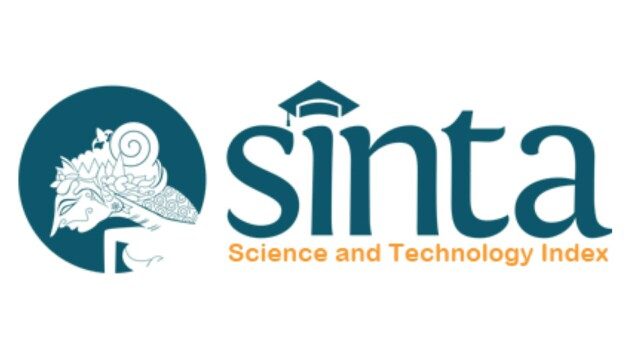Exploring a Home Bias-Free Area on the Expected Return Frontier
Abstract
Keywords
Full Text:
PDFReferences
Bank Negara Malaysia. (2024). Monetary Policy. Retrieved from https://www.bnm.gov.my/index.php?ch=en_press&pg=en_press&ac=2346&lang=en
Black, F., & Scholes, M. (1973). The pricing of options and corporate liabilities. Journal of Political Economy, 81(3). Retrieved from https://doi.org/10.1086/260062
Borio, C., & Zabai, A. (2021). Unconventional monetary policies: A re-appraisal. Economic Policy, 36(105), 1–36. Retrieved from https://doi.org/10.1093/epolic/eiab007
Bursa Efek Indonesia. (2024). Digital Statistic. Retrieved 19 October 2024, from https://www.idx.co.id/id/data-pasar/laporan-statistik/digital-statistic/
Bursa Malaysia. (2024a). Sector Analysis. Retrieved from https://www.bursamalaysia.com/market_information/sector_performance
Bursa Malaysia. (2024b). Bursa Malaysia Market Summary . Retrieved 19 October 2024, from https://www.bursamalaysia.com/market_information/market_statistic/securities
Chandra Dwi, C. I. (2022). Cuma Tiga Bursa Asia yang Kasih Cuan 2022, RI Salah Satunya! Retrieved 23 July 2024, from https://www.cnbcindonesia.com/market/20221230001202-17-401344/cuma-tiga-bursa-asia-yang-kasih-cuan-2022-ri-salah-satunya
Chandra Dwi, C. I. (2023). Kinerja Bursa Asia-Pasifik di 2023, Siapa yang Paling Moncer? Retrieved 23 July 2024, from https://www.cnbcindonesia.com/research/20231231153302-128-501624/kinerja-bursa-asia-pasifik-di-2023-siapa-yang-paling-moncer
Cheng, G., & Xie, Z. (2022). Robust portfolio optimization with semi-variance and expected shortfall. Journal of Risk and Financial Management, 15(1), 1–20. Retrieved from https://doi.org/10.3390/jrfm15010026
Coval, J. D., & Moskowitz, T. J. (1999). Home bias at home: Local equity preference in domestic portfolios. Journal of Finance, 54(6). Retrieved from https://doi.org/10.1111/0022-1082.00181
Fama, E F, & French, K. R. (2023). The five-factor asset pricing model: 2022 update. Journal of Financial Economics, 142(1), 22–43. Retrieved from https://doi.org/10.1016/j.jfineco.2022.04.001
Fama, Eugene F. (1970). Efficient Capital Markets: A Review of Theory and Empirical Work. The Journal of Finance, 25(2). Retrieved from https://doi.org/10.2307/2325486
Fama, Eugene F., & French, K. R. (1992). American Finance Association The Cross-Section of Expected Stock Returns Author ( s ): Eugene F . Fama and Kenneth R . French Source : The Journal of Finance , Vol . 47 , No . 2 ( Jun ., 1992 ), pp . 427-465 Published by : Wiley for the American Finance A. Financial Analysts Journal, 47(2), 427–465. Retrieved from https://doi.org/10.1111/jofi.l2143
French, K. R., & Poterba, J. M. (1991). Investor Diversification and International Equity Markets. The American Economic Review, 81(2), 222–226. Retrieved from http://www.jstor.org/stable/2006858
Giglio, S., Kelly, B., & Pruitt, S. (2021). Systemic risk and the macroeconomy: An empirical evaluation. Journal of Financial Economics, 142(3), 1030–1050. Retrieved from https://doi.org/10.1016/j.jfineco.2020.06.010
Hakim, M. L., & Waluyo, D. E. (2023). Jurnal Mirai Management Analisis Perbandingan Pembentukan Portofolio Optimal Menggunakan Model Indeks Tunggal Dan Model Markowitz. Jurnal Mirai Management, 8(1), 212–222.
Lv, Z., Tsang, C. K., Wagner, N. F., & Wong, W. K. (2023). What is an Optimal Allocation in Hong Kong Stock, Real Estate, and Money Markets: An Individual Asset, Efficient Frontier Portfolios, or a Naïve Portfolio? Is This a New Financial Anomaly? Emerging Markets Finance and Trade, 59(5). Retrieved from https://doi.org/10.1080/1540496X.2022.2136941
Mae, C. I. (2024, January 24). Malaysia Secretly Compels China-Singapore to Become Investment Rulers in RI. Newsdata. Jakarta. Retrieved 19 October 2024 from https://www.cnbcindonesia.com/research/20240124121322-128-508577/diam-diam-malaysia-pepet-china-singapura-jadi-penguasa-investasi-di-ri
Markowitz, H. (1952). American Finance Association Portfolio Selection Author ( s ): Harry Markowitz Source : The Journal of Finance , Vol . 7 , No . 1 ( Mar ., 1952 ), pp . 77-91 Published by : Wiley for the American Finance Association Stable URL : http://www.jstor.org/stabl. The Journal of Finance, 7(1), 77–91.
Merton, R. C. (1973). THEORY OF RATIONAL OPTION PRICING. Bell J Econ Manage Sci, 4(1). Retrieved from https://doi.org/10.2307/3003143
Otoritas Jasa Keuangan (OJK). (2024). Profil Pasar Modal Indonesia. Retrieved from https://www.ojk.go.id/id/kanal/pasar-modal/Pages/Profil-Pasar-Modal.aspx
Ross, S. A. (1976). The arbitrage theory of capital asset pricing. Journal of Economic Theory, 13(3), 341–360. Retrieved from https://doi.org/https://doi.org/10.1016/0022-0531(76)90046-6
Sharpe, W. F. (1963). A Simplified Model for Portfolio Analysis. Management Science, 9(2), 277–293. Retrieved from https://doi.org/10.1287/mnsc.9.2.277
Sharpe, W. F. (1964). 1964 Sharpe - Capital Asset Prices. The Journal of Finance, 19(3), 425–442.
Shiller, R. J. (1990). Market Volatility and Investor Behavior. The American Economic Review, 80(2), 58–62. Retrieved from http://www.jstor.org/stable/2006543
Simon, V. (2024). Jumlah Investor Saham di Indonesia Lampaui 6 Juta SID. Retrieved 19 October 2024, from https://www.idx.co.id/id/berita/siaran-pers/2225
Solnik, B. H. (1974). An equilibrium model of the international capital market. Journal of Economic Theory, 8(4). Retrieved from https://doi.org/10.1016/0022-0531(74)90024-6
Teng, Z. (2023). Stock Selection and Analysis Based on Valuation, Growth, Profitability and Payout. BCP Business & Management, 38. Retrieved from https://doi.org/10.54691/bcpbm.v38i.3798
Tobin, J. (1958). Liquidity preference as behavior towards risk. Review of Economic Studies. Retrieved from https://doi.org/10.2307/2296205
Trichilli, Y., Abbes, M. B., & Masmoudi, A. (2020). Islamic and conventional portfolios optimization under investor sentiment states: Bayesian vs Markowitz portfolio analysis. Research in International Business and Finance, 51. Retrieved from https://doi.org/10.1016/j.ribaf.2019.101071
World Bank. (2024). Indonesia Overview. Retrieved from https://www.worldbank.org/en/country/indonesia/overview
Yusef, M. P. (2015). Behavioural finance: A challenge to market efficiency. International Journal of Research in Commerce and Management, 6(12).
DOI: https://doi.org/10.24176/bmaj.v7i2.13513
Refbacks
- There are currently no refbacks.
Copyright (c) 2024 Business Management Analysis Journal (BMAJ)
View My Stats
Member of:
Indexed by:
Business Management Analysis Journal (BMAJ) is licensed under a Creative Commons Attribution-ShareAlike 4.0 International License.
Dedicated to:










